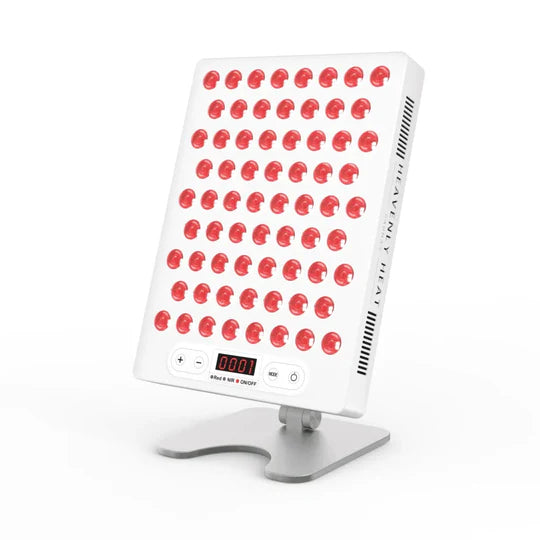Are Infrared Saunas Good For Arthritis?

Arthritis, particularly knee osteoarthritis (KOA), affects 250 million people globally, and this number is expected to rise dramatically to 78.4 million by 2040.
Given the growing prevalence of arthritis, finding effective treatments is crucial. This article explores the potential benefits of saunas for arthritis relief, examining whether this ancient practice can provide comfort and improve the quality of life for those suffering from this painful condition.
What Is Arthritis?
The Mayo Clinic explains that arthritis is not a single disease, but a term describing joint inflammation that leads to pain, stiffness, and decreased mobility, typically worsening with age. It occurs when one or more joints become inflamed, often due to wear and tear, autoimmune response, or other systemic conditions. The two most common forms are osteoarthritis , where joint cartilage deteriorates over time, and rheumatoid arthritis , where the immune system mistakenly attacks the joint lining.
The primary causes of arthritis include:
Cartilage breakdown (osteoarthritis): Wear-and-tear damages the protective cartilage that cushions joints.
Autoimmune attack (rheumatoid arthritis): The immune system targets the synovial membrane, causing swelling and joint damage.
Uric acid buildup : Excess uric acid can form sharp crystals in joints, triggering gout .
Infections or underlying diseases : Conditions like lupus or psoriasis can lead to specific types of arthritis.
Arthritis can severely limit daily activities, gripping objects, walking, or even getting dressed may become painful challenges.
Thankfully, effective strategies exist. While medications and physical therapy remain mainstays, low-impact exercises like swimming, combined with a healthy diet and weight management, offer a practical alternative.
With the right approach, many people manage arthritis successfully and continue enjoying active, fulfilling lives.
Are infrared Saunas Good For Arthritis?
Yes, infrared saunas can benefit people with rheumatoid arthritis and ankylosing spondylitis. A study showed that eight infrared sauna sessions over four weeks significantly reduced pain and stiffness and improved overall comfort without worsening disease activity. This makes infrared saunas a safe and effective complementary therapy for arthritis relief, though more research is needed for long-term effects.
Other Therapies that help with Arthritis
Acupuncture
- Acupuncture works by calming your body’s pain signals: Acupuncture targets special points in your body to help reduce inflammation, improve blood flow, and calm your immune system. This helps your body feel less pain and move more freely.
- It can naturally ease joint pain and stiffness: Many people find that regular acupuncture sessions reduce their joint pain and stiffness, without the need for strong medications.
- Research shows acupuncture really helps with arthritis: A 2018 review of 43 studies found that acupuncture, either alone or combined with other treatments, helped people with rheumatoid arthritis feel better and move easier.
- You don’t need to worry about side effects: The review also found that acupuncture didn’t cause harmful side effects, making it a safe option for long-term arthritis care.
- If you're looking for natural relief, this is worth trying: For anyone wanting to manage arthritis without relying only on medication, acupuncture could be a gentle and effective solution.
Massage Therapy
Massage therapy helps with arthritis by relaxing tight muscles, improving blood flow, and making stiff joints feel easier to move.
When your body feels less tense, it naturally hurts less and moves better. If you’re dealing with knee arthritis, massage can be a game changer.
In fact, a study in the Journal of General Internal Medicine (2018) found that people who got full-body massages every week for eight weeks felt less pain, had better movement, and felt less stiff than those who didn’t. Massage really can give your joints the break they need.
Tai Chi
Gentle movements like Tai Chi can ease arthritis pain by improving balance, flexibility, and joint strength, all without putting too much stress on your body.
It also calms the mind, which helps reduce pain perception. For instance, a study published in Arthritis Rheum. 2009 showed that people with knee osteoarthritis who practiced Tai Chi for 12 weeks had significantly less pain and better physical function compared to a control group.
They also reported improved mood, confidence, and overall quality of life, without any serious side effects.
Does a Sauna reduce inflammation?
Frequent sauna sessions significantly decrease inflammation markers , as evidenced by an 11-year study involving over 2,200 men.
Participants who used saunas 4–7 times a week had notably lower levels of high sensitivity C-reactive protein and leucocyte count , suggesting that regular sauna bathing may help reduce systemic inflammation and potentially lower the risk of various diseases .
What is the best Sauna for arthritis?
Any sauna from Heavenly Heat , a trusted brand since 1988 , can help alleviate arthritis pain through regular sauna therapy in the comfort of your own home.
Explore our range of sauna options to discover one that suits your needs and significantly improves your quality of life .
Our combination saunas offer spacious interiors for a full-body sauna experience , effectively relieving joint pain and inflammation .
Consider our outdoor sauna models for easy access , especially beneficial during colder months .







































